Embed presentation
Downloaded 305 times


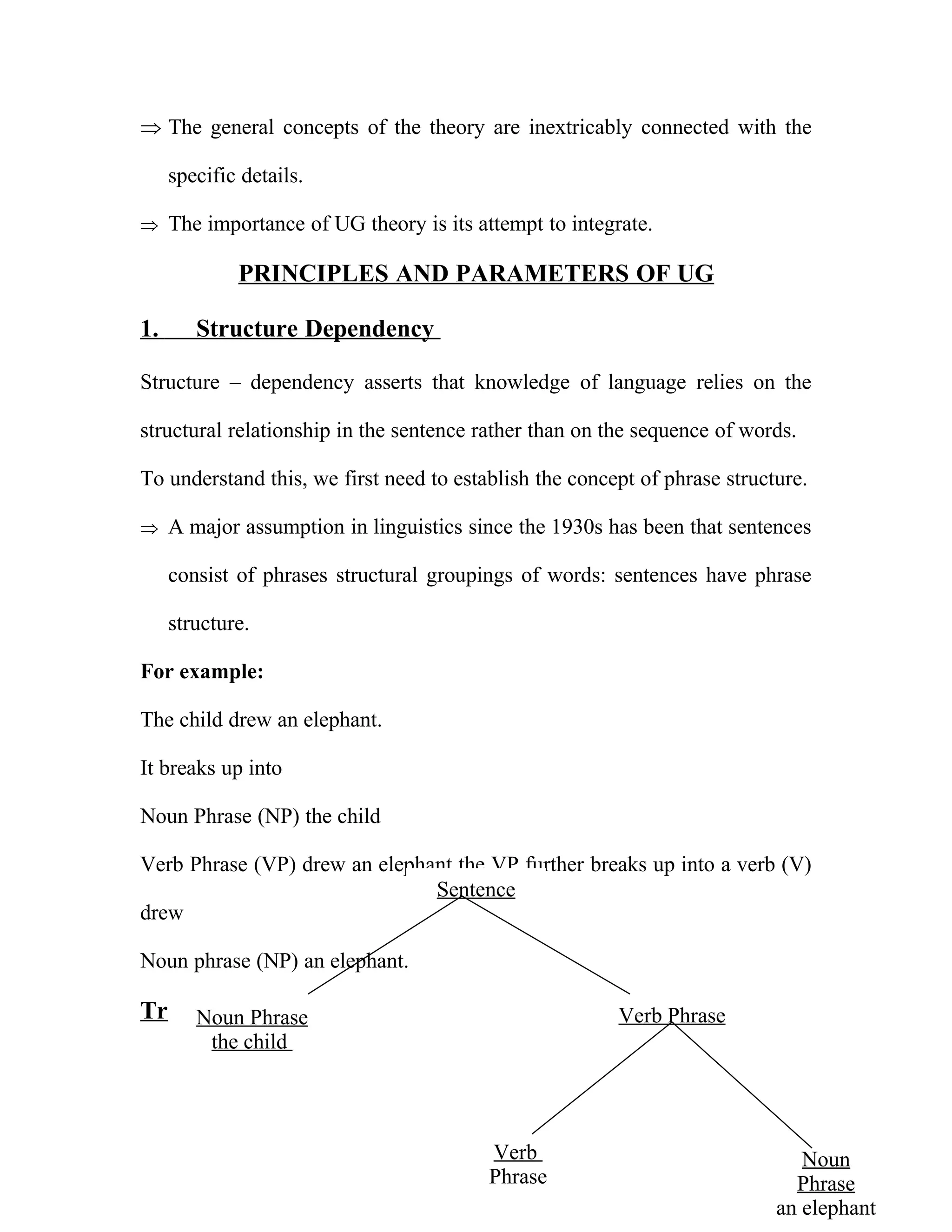
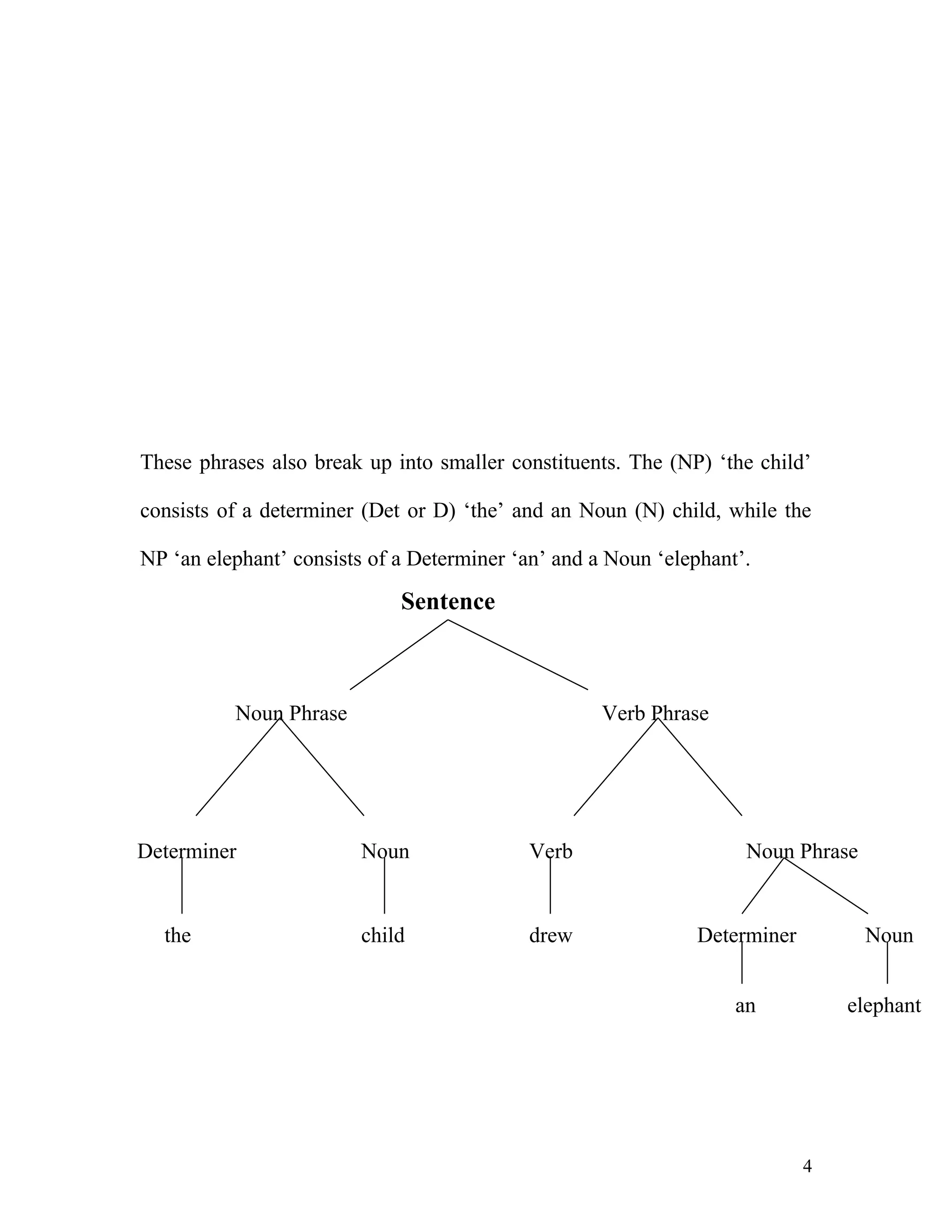


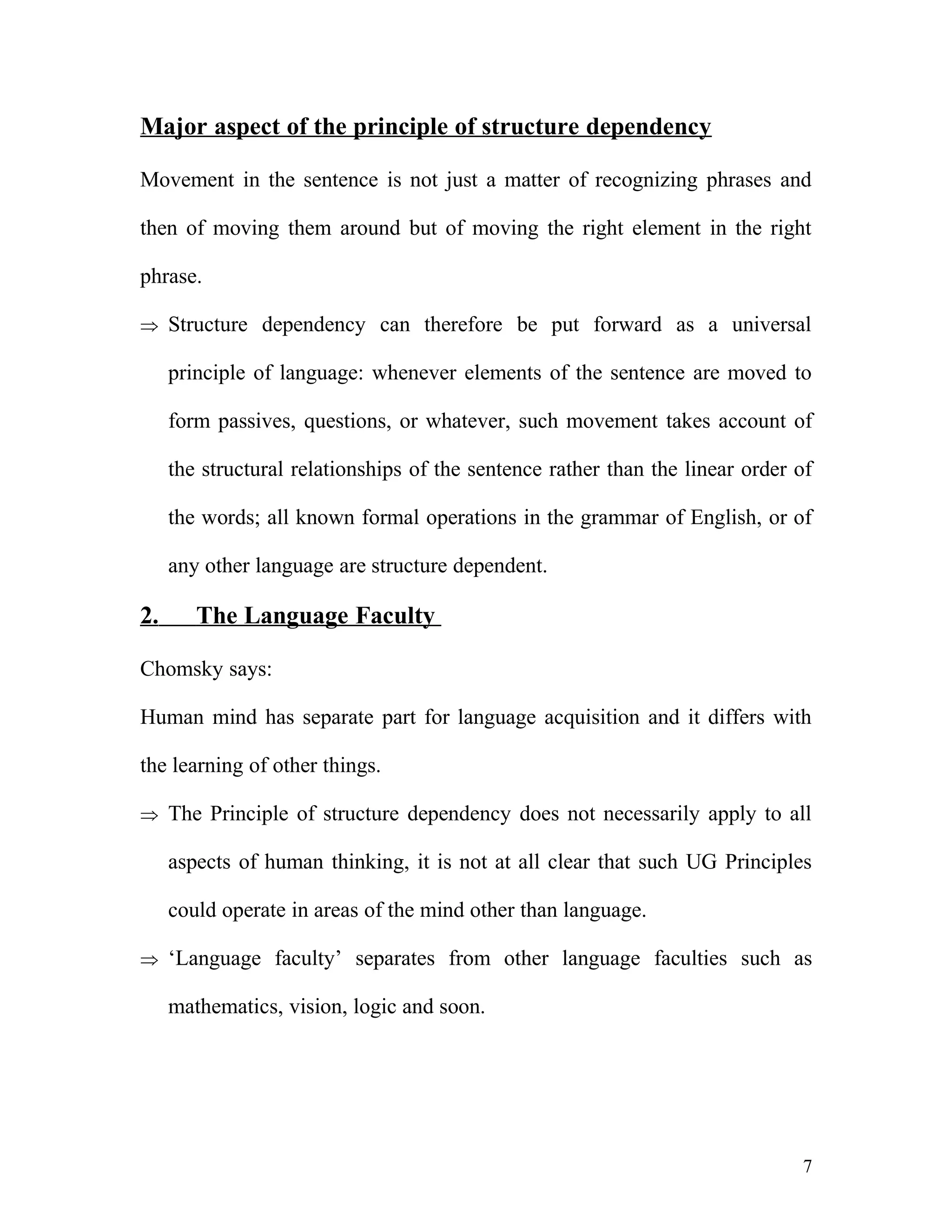
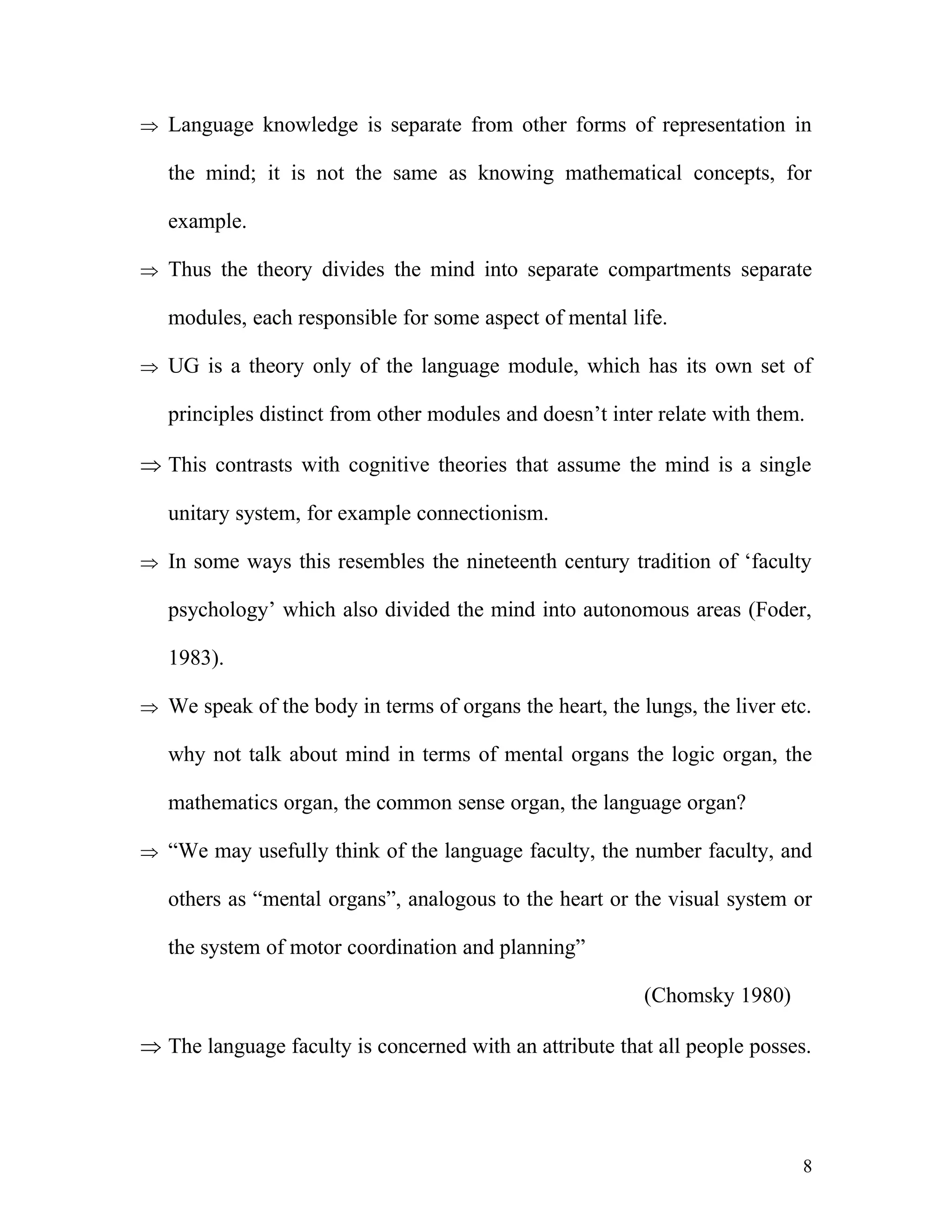
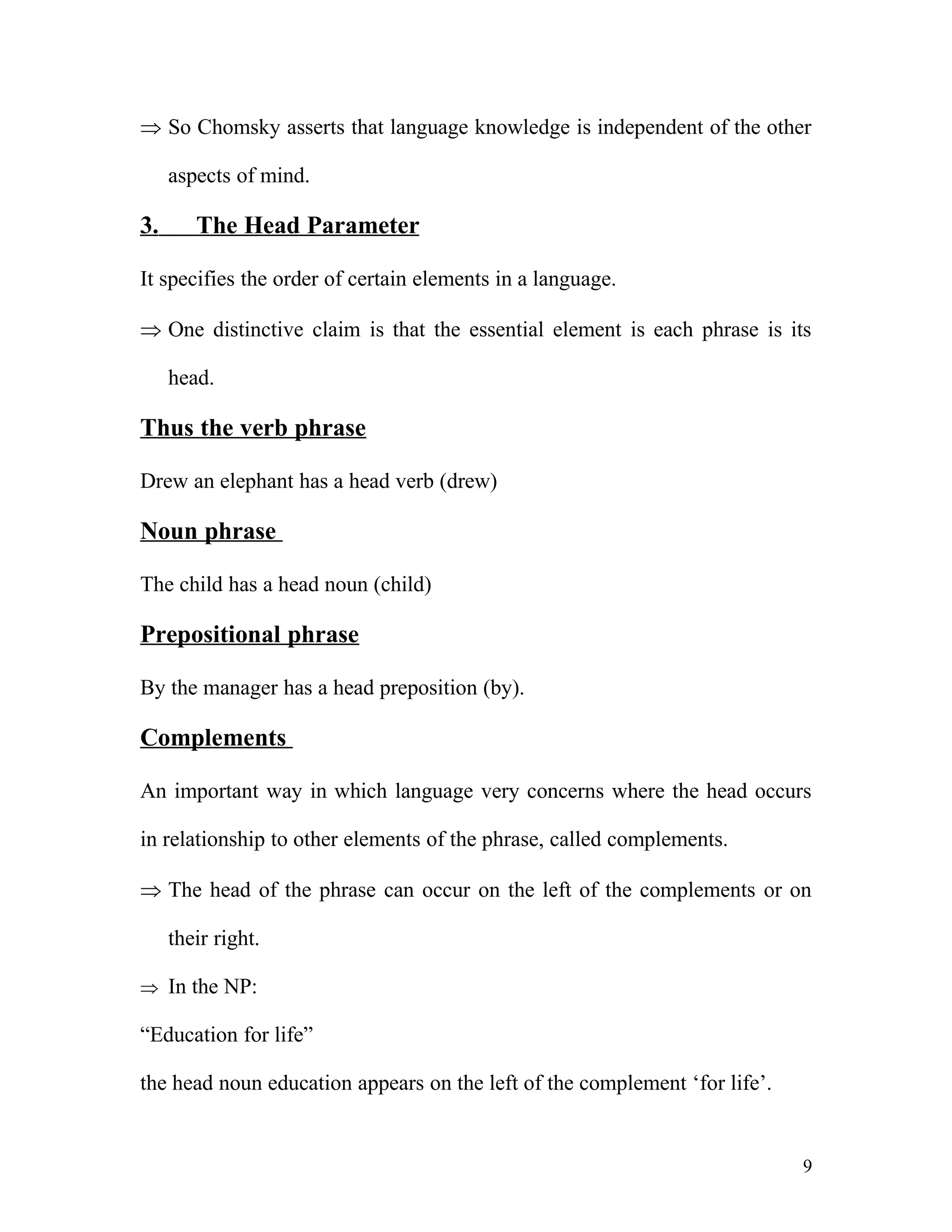
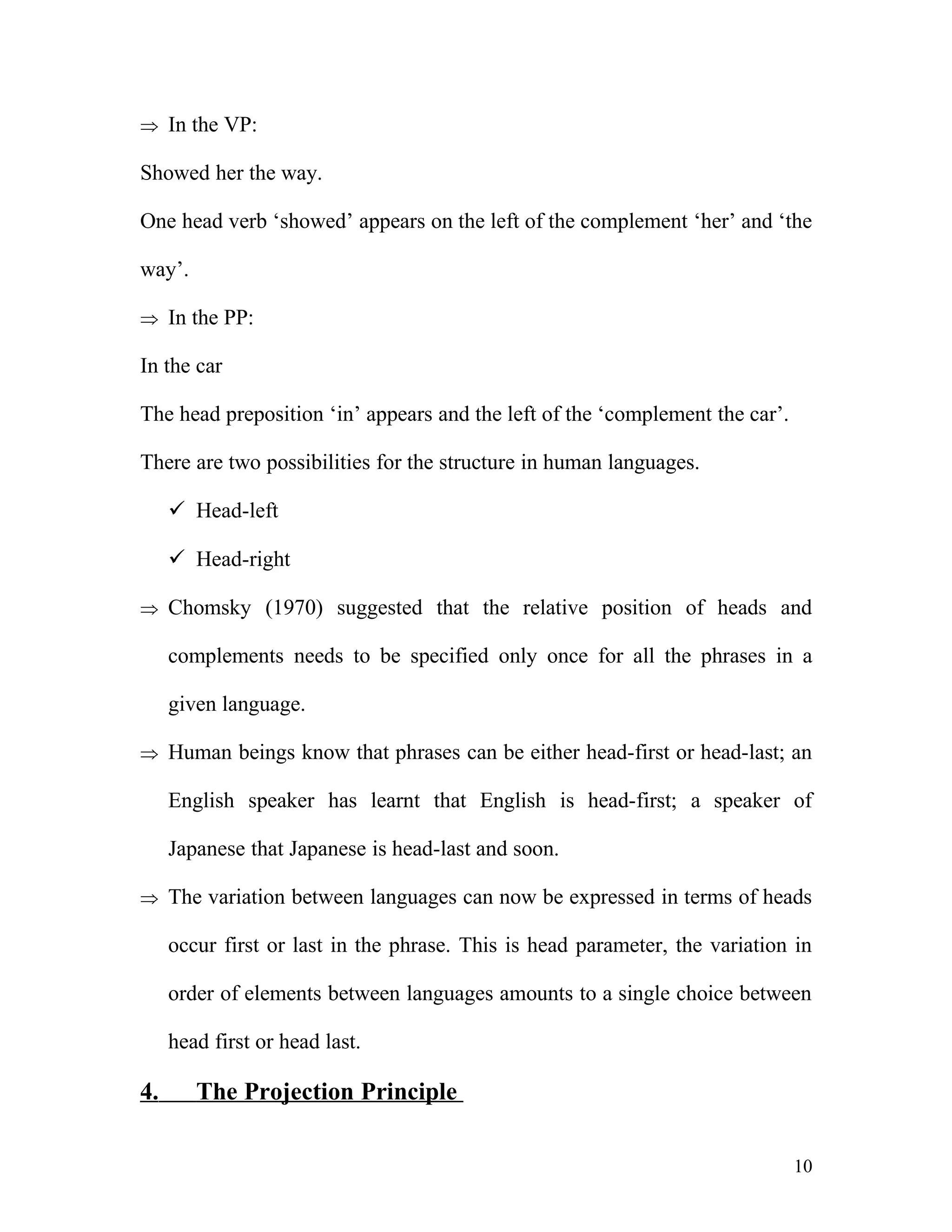








The document discusses three key concepts of Universal Grammar: 1. Structure dependency, which asserts that language relies on structural relationships rather than word order. Passive sentences in English demonstrate this by moving elements based on their structure, not position. 2. The language faculty, which proposes the mind has a separate, autonomous module for language that is distinct from other domains like logic or mathematics. 3. The head parameter, which specifies whether a language's phrases are head-first or head-last, with the head (e.g. verb, noun) appearing before or after complements within the phrase. This variation between languages is captured by the head parameter.

















Overview of Universal Grammar principles and parameters, emphasizing the internal structure of human language.
Details on structure dependency, language faculty, and its separation from other cognitive areas, emphasizing principles distinct to language.
Discussion on the head parameter, projection principle in language, and how verbs govern sentence structure.
Examination of sound-meaning relationship and the role of syntax in connecting phonetic and semantic representations.